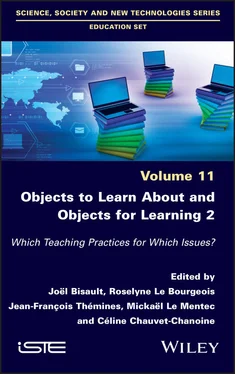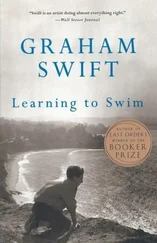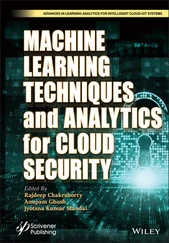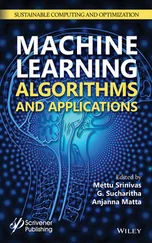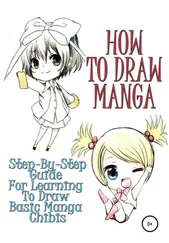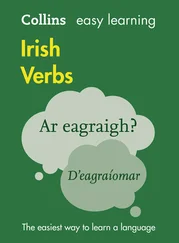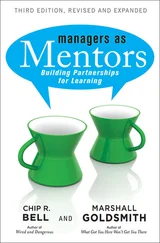This book tackles the question of objects in education and teaching by adopting different points of view without seeking to be exhaustive. Its approach lies in attacking, as it were, this theme by calling upon various stakeholders (researchers, teachers, trainers) who work within different communities and who often have little to do with one another. This aspiration, which the scientific committee adopted and fully supported, is reflected in a wide variety of contributions. The levels of education concerned thus range from pre-school to university and the objects referred to cover a very wide field from the train of the days of the week in kindergarten to the Minkowski diagram in a 12th grade science major, via the geographical map at the end of elementary school and the start of junior high (middle school).
Varied corpora have been constituted: video recordings and transcriptions of sessions, output from pupils or learners more generally (musical scores in pre-school, maps, drawings, printouts, etc.). Depending on the frameworks of analysis and the opportunities for observation or experimentation, they may give rise to case studies or call for various work to identify typologies or enable quantitative analyses. The relationships between researchers and practitioners are multiple too: the researcher can also be the practitioner, the designer of an engineered device, the external observer of a situation or a stakeholder in collaborative research. Professional testimonies ( Chapters 5and 8of Volume 1 and Chapters 4, 5and 9of Volume 2) accompany the research texts in this book: these testimonials, which provide more detail on the pedagogical descriptions and professional issues raised, come from teachers involved in the research or from researchers who have undertaken careful analysis of the research in which they have participated. These different researcher positions invariably shed light on what is being described and investigated: standard practices or more expert practices in collaboration with the researcher(s). Finally, these analyses also make it possible to learn more about professional practices and institutional frameworks specific to various national contexts: mainland France and its overseas territories, and also Spain, Greece and Switzerland.
The book begins with an introductory text by Joël Lebeaume that contextualizes and problematizes the theme of the book by summarizing the inaugural presentation of the conference. This is followed by an Introduction to the Subject (contributed by Sylvain Fabre) that demonstrates, for one type of object and one particular disciplinary context (the plastic arts), how pupil activity can result in the creation of an artistic object from an everyday object (a chair).
The two volumes consist of five parts, drawing together research texts and professional testimonies. Part 1of Volume 1 examines the links between objects and language. Part 2of Volume 1 is devoted to the place of objects in early learning in nursery school. Then, Part 1of Volume 2 explores one specific area of teaching–learning content – space and time. Part 2of Volume 2 investigates records of activity with objects. The two volumes conclude with Part 3of Volume 2, comprising three chapters that offer, transversally, contrasting points of view on objects, as well as perspectives for future work.
Part 1 of Volume 1 – Objects and Language(s)
This first part focuses on the relationships between objects in the broad sense and language(s): the learning, for young pupils, of foreign languages or the production of written work in French but also, for 12th grade students, the approach to the role of a “geometric object” in physics. Chapters mentioned in this part are concerned with clarifying, analyzing and investigating the mediation of a variety of objects and its contribution according to the learning objectives.
Progressing to writing short texts is a difficult step for the first grade pupils in a Zone d’éducation prioritaire (ZEP) 4. The objects chosen to tell a story materialize the elements and characters of the plot, thus becoming “catalysts” for writing. “The objects, through their materiality and the actions they stimulate, give a real character to situations that the child struggles to represent to him/herself because it calls for such a high level of abstraction” (written by Bruno Hubert in Chapter 2).
Chapters 1, 3and 4of Volume 1 examine foreign languages: second languages ( Chapters 1and 4) and additional languages ( Chapter 3), respectively.
Chapter 1(Élise Ouvrard) investigates the contribution of work carried out around children’s English-language picture books and their handling in Modern Foreign Languages (MFLs) sessions in elementary cycle 3, and considers what their instrumentation may involve. It compares approaches of beginners and experts in order to analyze the entries into reading enabled by these approaches, and underlines what is gained through material contact with these picture books: an affective environment and an emotive learning experience. It is an invitation to training so that the introduction of these books can become a real entry into foreign language literacy.
The Content and Language Integrated Learning (CLIL) experience (Zebra Gabillon and Rodica Ailincai in Chapter 3) lies at the intersection of the socio-cultural and the (socio-)interactionist perspectives. The two perspectives allow us to consider the role of mediation in language development, together with the role of linguistic and communicational aspects in the learning process. The joint contribution of the two teacher–researchers is innovative and offers the particularity of reporting on research on the CLIL process implemented in English, at elementary level, in French Polynesia. Chapter 4(Émilie Magnat and Karima Olechny) offers a reflective study of objects for language in kindergarten and the process which probationary teachers pass through with regard to the use of these objects, with a view to raising English language awareness. The choice of learning objects used (sequential images from a children’s story, a felt mitten, wooden characters) and the preferred approaches underline the importance of training so that objects and processes become instruments for linguistic development.
Finally, in Chapter 5(Laurent Moutet), the term “language” refers not to French or to another national language, but to a different semiotic system: graphic language. This graphic language, which makes it possible to visualize a mathematical relationship between the quantities of the system being studied, plays a very important role in scientific and technological education, particularly for the content and the school level being considered here (special relativity in a 12th grade science major). The graphic that is constructed with the pupils and then used (Minkowski diagram) takes on the status of a “graphic object” that enables the pupils to reason on concepts that are often counterintuitive. This chapter thus illustrates the fundamental role played by graphic representations in conceptualization.
Part 2 of Volume 1 – Objects and Early Learning
There is one segment of education that cannot manage without objects for learning and to learn about: it is kindergarten, in which the ubiquity of objects of all kinds could be described as an invariant of this first school. In fact, as early as 1886, Pauline Kergomard, founder of this institution devoted to early learning, wrote:
In order to keep occupied, the child must have material objects at his or her disposal. The child who is barely walking pushes a chair in front of him/her for support; an older child turns his/her chair into an improvised horse; then there are the toys, real ones, from the rattle with bells on for the babe-in-arms, to the game of dominoes with which the eldest is learning to count to 12 […]. And it actually is an educational resource, since each of the objects of which it is composed is used for the physical and intellectual development of the child who has it within his/her reach 5.
Читать дальше
